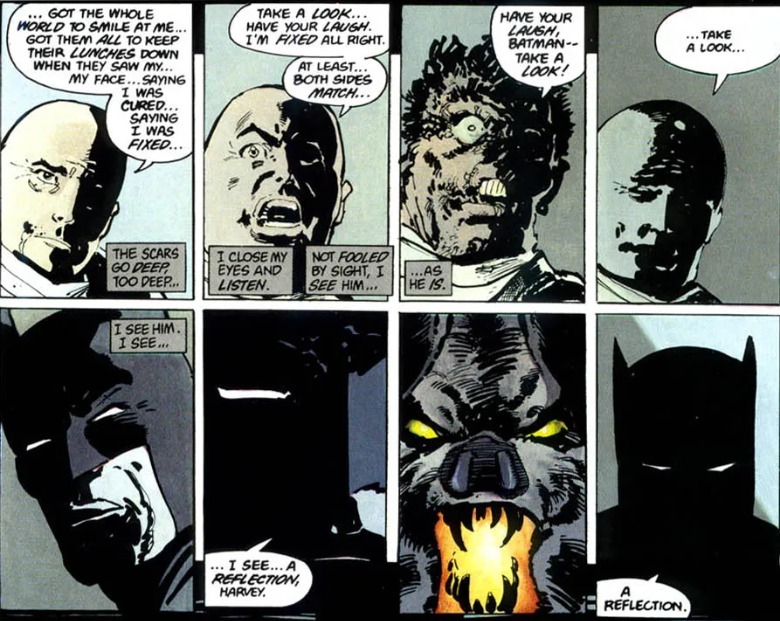Timm knows something about reinventing Two-Face; he’s helped do it before. “Batman: The Animated Series” initially introduces Harvey Dent as a friend of Bruce Wayne. That makes Dent’s transformation in the two-part episode “Two-Face” (written by Alan Burnett and Randy Rogel) all the more tragic; Batman didn’t just fail a good man, he failed his friend.
Harvey Dent having been a friend to Batman pre-Two-Face in an accepted part of Batman lore, but different versions play it differently. In Jeph Loeb and Tim Sale’s 1996 comic “Batman: The Long Halloween,” Bruce Wayne isn’t especially acquainted with Harvey but the DA is Batman’s only ally in the Gotham City justice system besides Commissioner Gordon. This trio being in an alliance to take down Gotham City’s mob (before Dent becomes Two-Face) was adapted into Christopher Nolan’s 2008 Batman film “The Dark Knight.”
Aside from Batman and Two-Face’s often shared history, each of Batman’s villains is a dark mirror of him. With Two-Face, it’s his split identity — and how the Bat often triumphs over the Man.
Frank Miller’s 1986 “The Dark Knight Returns” featured a 55-year-old Bruce Wayne coming out of a 10-year-retirement as Batman. The book’s first chapter follows his restlessness in trying to live without Batman and his failure to do so. Miller makes Two-Face the villain of this first chapter; Harvey Dent has gotten plastic surgery to repair his face, but that only destroyed his mind even further, convinced that “both sides match” now.
The first issue of “Dark Knight Returns” ends with Batman pulling off bandages from Harvey’s face and recoiling — not because it’s scarred, but because it isn’t and Harvey is still convinced he’s a monster. Batman sadly says that looking at Harvey’s face, he sees his own reflection.

